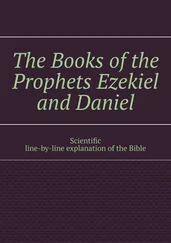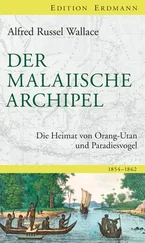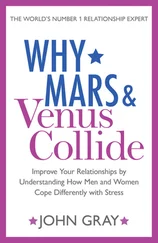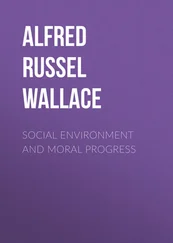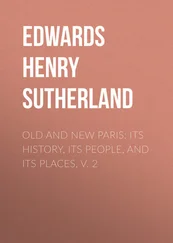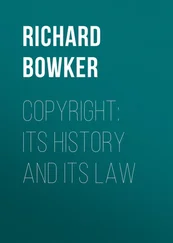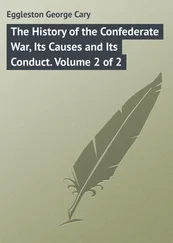Alfred Wallace - Is Mars habitable? A critical examination of Professor Percival Lowell's book Mars and its canals, with an alternative explanation
Здесь есть возможность читать онлайн «Alfred Wallace - Is Mars habitable? A critical examination of Professor Percival Lowell's book Mars and its canals, with an alternative explanation» — ознакомительный отрывок электронной книги совершенно бесплатно, а после прочтения отрывка купить полную версию. В некоторых случаях можно слушать аудио, скачать через торрент в формате fb2 и присутствует краткое содержание. Издательство: Иностранный паблик, Жанр: foreign_edu, Физика, на английском языке. Описание произведения, (предисловие) а так же отзывы посетителей доступны на портале библиотеки ЛибКат.
- Название:Is Mars habitable? A critical examination of Professor Percival Lowell's book Mars and its canals, with an alternative explanation
- Автор:
- Издательство:Иностранный паблик
- Жанр:
- Год:неизвестен
- ISBN:нет данных
- Рейтинг книги:5 / 5. Голосов: 1
-
Избранное:Добавить в избранное
- Отзывы:
-
Ваша оценка:
- 100
- 1
- 2
- 3
- 4
- 5
Is Mars habitable? A critical examination of Professor Percival Lowell's book Mars and its canals, with an alternative explanation: краткое содержание, описание и аннотация
Предлагаем к чтению аннотацию, описание, краткое содержание или предисловие (зависит от того, что написал сам автор книги «Is Mars habitable? A critical examination of Professor Percival Lowell's book Mars and its canals, with an alternative explanation»). Если вы не нашли необходимую информацию о книге — напишите в комментариях, мы постараемся отыскать её.
Is Mars habitable? A critical examination of Professor Percival Lowell's book Mars and its canals, with an alternative explanation — читать онлайн ознакомительный отрывок
Ниже представлен текст книги, разбитый по страницам. Система сохранения места последней прочитанной страницы, позволяет с удобством читать онлайн бесплатно книгу «Is Mars habitable? A critical examination of Professor Percival Lowell's book Mars and its canals, with an alternative explanation», без необходимости каждый раз заново искать на чём Вы остановились. Поставьте закладку, и сможете в любой момент перейти на страницу, на которой закончили чтение.
Интервал:
Закладка:
Discovery of the Double Canals.
In 1881 another strange feature was discovered by Schiaparelli, who found that about twenty canals which had previously been seen single were now distinctly double, that is, that they consisted of two parallel lines, equally distinct and either very close together or a considerable distance apart. This curious appearance was at first thought to be due to some instrumental defect or optical illusion; but as it was soon confirmed by other observers with the best instruments and in widely different localities it became in time accepted as a real phenomenon of the planet's surface.
Round Spots discovered in 1892.
At the favourable opposition of 1892, Mr. W. H. Pickering noticed that besides the 'seas' of various sizes there were numerous very small black spots apparently quite circular and occurring at every intersection or starting-point of the 'canals.' Many of these had been seen by Schiaparelli as larger and ill-defined dark patches, and were termed seas or lakes; but Mr. Pickering's observatory was at Arequipa in Peru, about 8000 feet above the sea, and with such perfect atmospheric conditions as were, in his opinion, equal to a doubling of telescopic aperture. They were soon detected by other observers, especially by Mr. Lowell in 1894, who thus wrote of them:
"Scattered over the orange-ochre groundwork of the continental regions of the planet, are any number of dark round spots. How many there may be it is not possible to state, as the better the seeing, the more of them there seem to be. In spite, however, of their great number, there is no instance of one unconnected with a canal. What is more, there is apparently none that does not lie at the junction of several canals. Reversely, all the junctions appear to be provided with spots. Plotted upon a globe they and their connecting canals make a most curious network over all the orange-ochre equatorial parts of the planet, a mass of lines and knots, the one marking being as omnipresent as the other."
Changes of Colour recognised.
During the oppositions of 1892 and 1894 it was fully recognised that a regular course of change occurred dependent upon the succession of the seasons, as had been first suggested by Schiaparelli. As the polar snows melt the adjacent seas appear to overflow and spread out as far as the tropics, and are often seen to assume a distinctly green colour. These remarkable changes and the extraordinary phenomena of perfect straight lines crossing each other over a large portion of the planet's surface, with the circular spots at their intersections, had such an appearance of artificiality that the idea that they were really 'canals' made by intelligent beings for purposes of irrigation, was first hinted at, and then adopted as the only intelligible explanation, by Mr. Lowell and a few other persons. This at once seized upon the public imagination and was spread by the newspapers and magazines over the whole civilised world.
Existence of Seas doubted.
At this time (1894) it began to be doubted whether there were any seas at all on Mars. Professor Pickering thought they were far more limited in size than had been supposed, and even might not exist as true seas. Professor Barnard, with the Lick thirty-six inch telescope, discerned an astonishing wealth of detail on the surface of Mars, so intricate, minute, and abundant, that it baffled all attempts to delineate it; and these peculiarities were seen upon the supposed seas as well as on the land-surfaces. In fact, under the best conditions these 'seas' lost all trace of uniformity, their appearance being that of a mountainous country, broken by ridges, rifts, and canyons, seen from a great elevation. As we shall see later on these doubts soon became certainties, and it is now almost universally admitted that Mars possesses no permanent bodies of water.
CHAPTER II.
MR. PERCIVAL LOWELL'S DISCOVERIES AND THEORIES
The Observatory in Arizona.
In 1894, after a careful search for the best atmospheric conditions, Mr. Lowell established his observatory near the town of Flagstaff in Arizona, in a very dry and uniform climate, and at an elevation of 7300 feet above the sea. He then possessed a fine equatorial telescope of 18 inches aperture and 26 feet focal length, besides two smaller ones, all of the best quality. To these he added in 1896 a telescope with 24 inch object glass, the last work of the celebrated firm of Alvan Clark & Sons, with which he has made his later discoveries. He thus became perhaps more favourably situated than any astronomer in the northern hemisphere, and during the last twelve years has made a specialty of the study of Mars, besides doing much valuable astronomical work on other planets.
Mr, Lowell's recent Books upon Mars.
In 1905 Mr. Lowell published an illustrated volume giving a full account of his observations of Mars from 1894 to 1903, chiefly for the use of astronomers; and he has now given us a popular volume summarising the whole of his work on the planet, and published both in America and England by the Macmillan Company. This very interesting volume is fully illustrated with twenty plates, four of them coloured, and more than forty figures in the text, showing the great variety of details from which the larger general maps have been constructed.
Non-natural Features of Mars.
But what renders this work especially interesting to all intelligent readers is, that the author has here, for the first time, fully set forth his views both as to the habitability of Mars and as to its being actually inhabited by beings comparable with ourselves in intellect. The larger part of the work is in fact devoted to a detailed description of what he terms the 'Non-natural Features' of the planet's surface, including especially a full account of the 'Canals,' single and double; the 'Oases,' as he terms the dark spots at their intersections; and the varying visibility of both, depending partly on the Martian seasons; while the five concluding chapters deal with the possibility of animal life and the evidence in favour of it. He also upholds the theory of the canals having been constructed for the purpose of 'husbanding' the scanty water-supply that exists; and throughout the whole of this argument he clearly shows that he considers the evidence to be satisfactory, and that the only intelligible explanation of the whole of the phenomena he so clearly sets forth is, that the inhabitants of Mars have carried out on their small and naturally inhospitable planet a vast system of irrigation-works, far greater both in its extent, in its utility, and its effect upon their world as a habitation for civilised beings, than anything we have yet done upon our earth, where our destructive agencies are perhaps more prominent than those of an improving and recuperative character.
A Challenge to the Thinking World.
This volume is therefore in the nature of a challenge, not so much to astronomers as to the educated world at large, to investigate the evidence for so portentous a conclusion. To do this requires only a general acquaintance with modern science, more especially with mechanics and physics, while the main contention (with which I shall chiefly deal) that the features termed 'canals' are really works of art and necessitate the presence of intelligent organic beings, requires only care and judgment in drawing conclusions from admitted facts. As I have already paid some attention to this problem and have expressed the opinion that Mars is not habitable, 2 2 Man's Place in the Universe p. 267 (1903).
judging from the evidence then available, and as few men of science have the leisure required for a careful examination of so speculative a subject, I propose here to point out what the facts, as stated by Mr. Lowell himself, do not render even probable much less prove. Incidentally, I may be able to adduce evidence of a more or less weighty character, which seems to negative the possibility of any high form of animal life on Mars, and, a fortiori , the development of such life as might culminate in a being equal or superior to ourselves. As most popular works on Astronomy for the last ten years at least, as well as many scientific periodicals and popular magazines, have reproduced some of the maps of Mars by Schiaparelli, Lowell, and others, the general appearance of its surface will be familiar to most readers, who will thus be fully able to appreciate Mr. Lowell's account of his own further discoveries which I may have to quote. One of the best of these maps I am able to give as a frontispiece to this volume, and to this I shall mainly refer.
Интервал:
Закладка:
Похожие книги на «Is Mars habitable? A critical examination of Professor Percival Lowell's book Mars and its canals, with an alternative explanation»
Представляем Вашему вниманию похожие книги на «Is Mars habitable? A critical examination of Professor Percival Lowell's book Mars and its canals, with an alternative explanation» списком для выбора. Мы отобрали схожую по названию и смыслу литературу в надежде предоставить читателям больше вариантов отыскать новые, интересные, ещё непрочитанные произведения.
Обсуждение, отзывы о книге «Is Mars habitable? A critical examination of Professor Percival Lowell's book Mars and its canals, with an alternative explanation» и просто собственные мнения читателей. Оставьте ваши комментарии, напишите, что Вы думаете о произведении, его смысле или главных героях. Укажите что конкретно понравилось, а что нет, и почему Вы так считаете.


